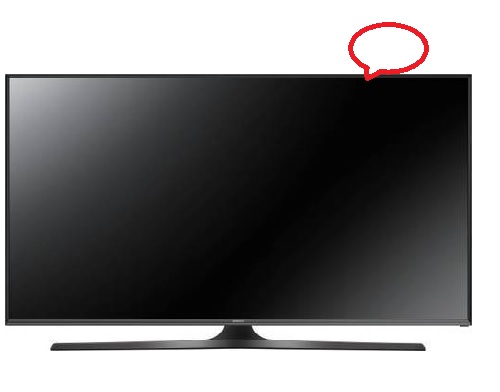Is your monitor constantly going black for a second, interrupting your work or gaming experience? Don’t worry, you’re not alone. This issue can be frustrating, but the good news is that there are several potential causes and solutions. In this comprehensive troubleshooting guide, we’ll explore the most common reasons behind a monitor going black for a second and provide you with step-by-step solutions to fix the problem. So let’s dive in and get your monitor back to working flawlessly!
What Causes a Monitor to Go Black for a Second?
Before we dive into the solutions, let’s first understand the possible causes of your monitor going black for a second. While there can be various reasons, here are some common culprits:
- Corrupt or outdated display adapters: Outdated or corrupted display drivers can interfere with the communication between your operating system and the monitor, resulting in a black screen issue.
- Poorly configured power settings: Incorrect power settings, such as the power saver mode, can cause your monitor to turn off momentarily.
- Loose connection cables: Loose or improperly connected cables between your monitor and computer can lead to intermittent blackouts.
- Conflicting apps or antivirus software: Certain applications or antivirus software may conflict with your monitor’s display, causing it to go black for a second.
- Hardware failure: In some cases, a faulty monitor or hardware component can be the root cause of the black screen issue.
Now that we’ve identified the potential causes, let’s move on to the troubleshooting steps to fix your monitor.
1. Update Your Graphics Card’s Driver
One of the first steps to resolve the black screen problem is to ensure that your graphics card driver is up to date. Outdated or corrupt drivers can often cause display issues. Here’s how you can update your graphics card’s driver:
- Press the Windows Key + X on your keyboard to open the Power User Menu.
- Select Device Manager from the list.
- Expand the Display adapters category, and double-click on your graphics card.
- Go to the Driver tab and click the Update Driver button.
- Choose the Search automatically for drivers option to let Windows find and install the latest driver for your graphics card.
Alternatively, you can use driver updater software to automatically scan and update your GPU driver. This can save you time and ensure that you have the latest driver version.
2. Roll Back Your Graphics Card’s Driver
If updating the graphics card driver doesn’t resolve the issue or if you’ve recently updated the driver and started experiencing the black screen problem, you can try rolling back to a previous driver version. Here’s how:
- Press the Windows Key + X on your keyboard to open the Power User Menu.
- Select Device Manager from the list.
- Locate your graphics card driver, double-click it, and go to the Driver tab.
- Click the Roll Back Driver button to revert to the previous driver version.
- Follow the on-screen instructions to complete the rollback process.
Rolling back the driver can help if the latest driver version is causing compatibility issues with your monitor.
3. Adjust Power Settings
Misconfigured power settings can sometimes lead to a black screen issue. By adjusting your PC’s power settings, you can ensure that the display remains active and prevent it from going black. Follow these steps:
- Open the Windows search tool by pressing the Windows and S keys simultaneously.
- Type Control Panel in the search box and click on it to open the Control Panel.
- In the Control Panel, click on Hardware and Sound.
- Choose Power Options.
- Select either the High Performance or Balanced power plan. Avoid selecting the Power Saver option.
- Click on Change plan settings for your chosen power plan.
- Set the Turn off the display and Put the computer to sleep options to Never.
- Save the changes by clicking the Save changes button.
Adjusting the power settings to keep the display active can prevent it from going black unexpectedly.
4. Check Connection Cables
Loose or improperly connected cables can cause intermittent blackouts on your monitor. Ensure that all cables between your monitor and computer are securely connected. Follow these steps:
- Turn off your computer and monitor.
- Disconnect and inspect each cable, including the power cable, video cable (HDMI, DisplayPort, VGA, etc.), and any other peripherals.
- Look for any signs of damage, such as frayed wires or bent pins.
- Clean the cable connectors and ports, removing any dust or debris that may be affecting the connection.
- Reconnect the cables firmly, ensuring a snug fit. You should feel a click when connecting cables like HDMI or DisplayPort.
After checking and reconnecting the cables, turn on your computer and monitor to see if the black screen issue persists.
5. Disable Conflicting Apps or Antivirus Software
Certain applications or antivirus software can conflict with your monitor’s display settings, leading to intermittent black screen issues. Temporarily disabling these apps can help identify if they are causing the problem. Here’s how:
- Press the Windows Key + R on your keyboard to open the Run dialog box.
- Type msconfig and press Enter to open the System Configuration window.
- In the System Configuration window, go to the General tab.
- Check the Selective startup option and uncheck Load startup items.
- Go to the Services tab and check the Hide all Microsoft services option.
- Click the Disable all button to disable all third-party services.
- Click Apply and then OK to save the changes.
- Restart your computer to apply the changes.
After the reboot, check if the black screen issue persists. If it doesn’t, gradually enable the disabled services and applications one by one to identify the culprit.
6. Monitor Reset
Performing a factory reset on your monitor can often resolve the black screen problem. The process may vary depending on the make and model of your monitor. Here’s a general guide:
- Turn off your monitor and unplug it from the power source.
- Wait for a few minutes to discharge any residual power.
- Locate the OSD (On-Screen Display) buttons on your monitor. These are usually located on the front or side of the monitor.
- Press the appropriate OSD button to access the settings menu.
- Navigate through the menu options to find the Factory Reset or Reset to Defaults option.
- Select the option and confirm the reset when prompted.
- Plug your monitor back into the power source and turn it on.
Performing a factory reset can help resolve any software-related issues that may be causing the black screen problem.
7. Hardware Inspection
If none of the above solutions have resolved the issue, it’s possible that there is a hardware problem with your monitor or computer. Here are some steps you can take to inspect your hardware:
- Test your monitor on a different computer or laptop. If the black screen issue persists on another device, it indicates a problem with the monitor itself.
- Test a different monitor on your computer or laptop. If the black screen problem doesn’t occur with the new monitor, it suggests an issue with your original monitor.
- Inspect the hardware components of your computer, such as the CPU cooler, GPU, and RAM modules. Ensure that they are properly seated and free from any damage or dust.
- Check the power supply and ensure that it is adequate for your system’s requirements. Make sure all cables are properly connected.
- If you suspect overheating, monitor the temperatures of your CPU and GPU using software tools. Excessive heat can cause performance issues and display problems.
If you’re not comfortable inspecting the hardware yourself, it’s recommended to seek assistance from a professional or contact the manufacturer for further guidance.
8. Additional Tips and Tricks
Here are some additional tips and tricks that may help resolve the black screen issue:
- Lower the monitor’s refresh rate to 60Hz if you have a high refresh-rate monitor.
- Lower the monitor’s resolution below 3840×2560 (4K) if you have a high-resolution display.
- Try using a single monitor if you have multiple displays to see if it makes a difference.
- Use a shorter or different cable to rule out any cable-related issues.
- Check your power strips and ensure that you’re not overloading the circuit.
- Try using a different connector (HDMI, DisplayPort, VGA, DVI, USB-C) to connect your monitor.
- Monitor your GPU’s temperature, as overheating can cause display flickering and blackouts.
- If you’re using a FreeSync monitor with an Nvidia GPU, be aware that black flickering is a known issue.
Feel free to share any additional solutions or tips that have worked for you in the comments below.
Conclusion
Experiencing a monitor that constantly goes black for a second can be frustrating, but with the right troubleshooting steps, you can resolve the issue. By updating your graphics card driver, adjusting power settings, checking connection cables, disabling conflicting apps, and inspecting hardware components, you can eliminate the black screen problem and enjoy uninterrupted usage of your monitor. Remember to follow the steps systematically and seek professional assistance if needed. We hope this guide has been helpful to you in fixing the black screen issue on your monitor. Happy computing!






